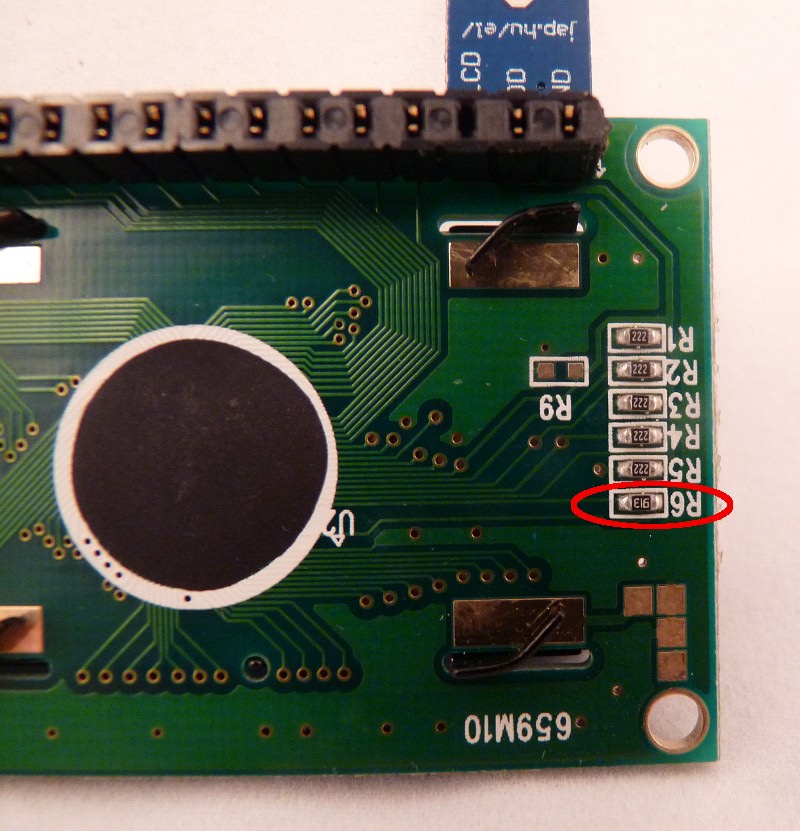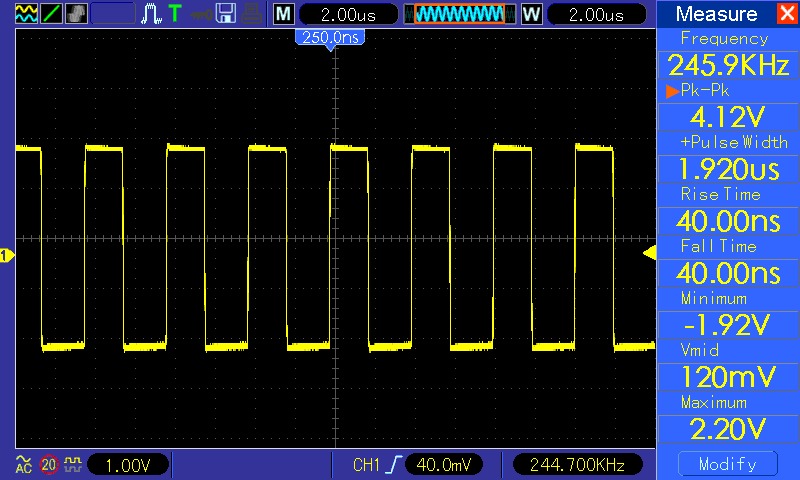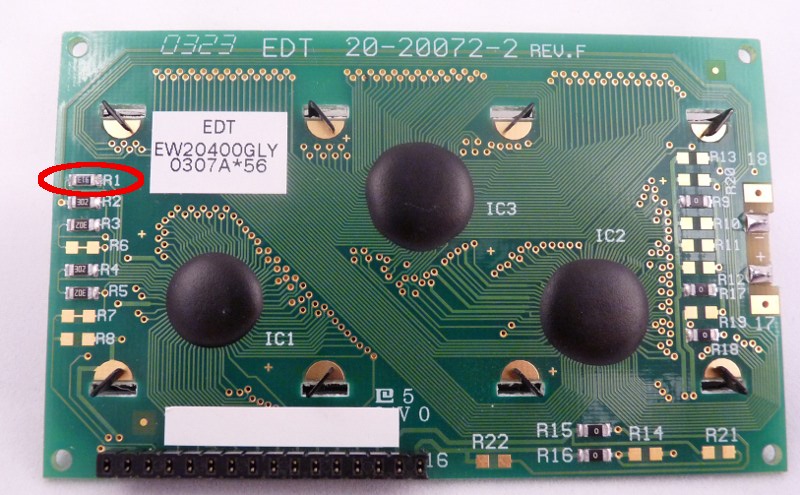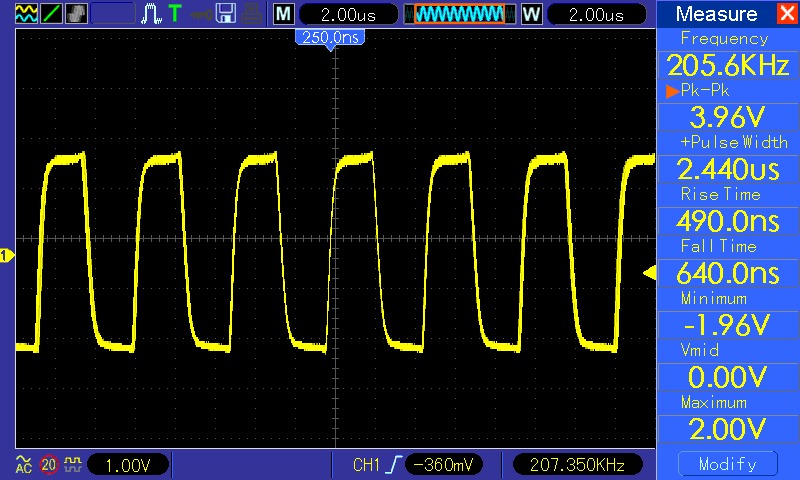Getting character LCDs to work at 3 volts
Generic character LCD modules contain an industry standard HD44780
compatible controller, which can operate down at 3 volts. But the modules are
usually specified to work only at 5 volts, unless you choose a specific
one designed for 3V operation.
This is the second page of the article.
< read the first page
Finding and adjusting the LCD oscillator
This modification is optional, you only need to do it if you have problems with the LCD being slow.
On both 5V LCD modules I checked, Rosc is a 91 kohm resistor. You can
find this resistor by measuring the pads with a frequency meter or an
oscilloscope and look for the clock signal around the nominal 270kHz
frequency. By replacing this resistor with a smaller value one, the
oscillator will run faster.
This is a 2x16 character LCD module

The signal on Rosc (R6 on the picture) is around 246 kHz

This is a 4x20 character LCD module

The signal on Rosc (R1 on the picture) is 206kHz

The datasheet specification recommends a 91k 2% resistor at 5 volts,
and a 75k 2% resistor at 3 volts. After replacing Rosc with a 75kohm
resistor, you should recheck the frequency to be around the specified
270 kHz. Don't go above 350kHz, or the LCD may start to behave
unreliably.
References
 Peter's electronic
projects
Peter's electronic
projects Peter's electronic
projects
Peter's electronic
projects


